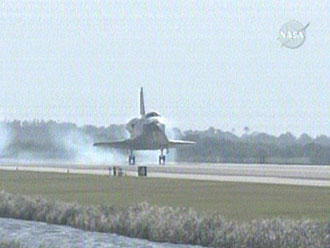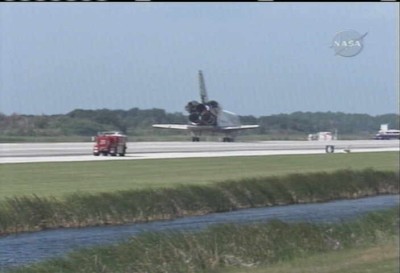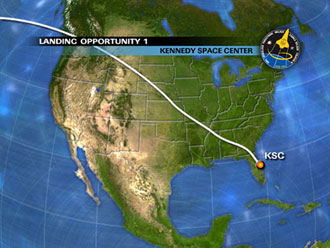There are a number of tasks left to do for the ISS crew, among them even some “first evers”. The schedule is pretty busy and all needs to be done in order to support Atlantis’ STS-122 flight.
Today I received the NASA TV schedule, just in case you’d like to watch the work:
HOUSTON – In the wake of space shuttle Discovery’s delivery of the Harmony connecting module to the International Space Station, the station crew will conduct three spacewalks and robotically move two components this month to prepare for delivery of a European laboratory. All of the spacewalks and major robotics work will be broadcast live on NASA Television.
The shuttle Atlantis is targeted to launch Dec. 6 to deliver the European Space Agency’s Columbus science module. Before Columbus can be added to the station, Harmony must be relocated to its permanent location at the front of the complex. The station crew’s spacewalks and robotics work this month will complete that task, allowing Atlantis to dock and Columbus to attach to Harmony.
The NASA Television schedule includes:
4 a.m. CST Friday, Nov. 9 – NASA TV live coverage will begin as Expedition 16 Commander Peggy Whitson and Flight Engineer Yuri Malenchenko don U.S. spacesuits to conduct a 6.5-hour spacewalk to prepare a docking port on the forward end of the Destiny Laboratory to be detached. A press conference will follow the spacewalk on NASA TV, originating from NASA’s Johnson Space Center in Houston with questions from reporters at participating NASA sites.
4 a.m. CST Monday, Nov. 12 – NASA TV will broadcast live coverage as Whitson and Flight Engineer Dan Tani use the station’s Canadarm2 robotic arm to detach the docking port, known as pressurized mating adapter-2, and relocate it to the forward end of the Harmony. No news conference is planned following the mating adapter relocation.
3:30 a.m. CST Wednesday, Nov. 14 – NASA TV will broadcast live coverage as Whitson and Tani use the Canadarm2 to detach Harmony and its new docking adapter from their current location attached to the Unity module. They will reposition Harmony to be attached to the forward end of the Destiny Lab, its permanent location. This will be the first time a major component of the station has been relocated without a shuttle present. No news conference is planned following Harmony’s relocation.
4 a.m. CST Tuesday, Nov. 20 – NASA TV will broadcast live coverage as Whitson and Tani conduct a 6.5-hour spacewalk to hook up fluid, electrical and data lines for the relocated mating adapter and Harmony module. A press conference will follow the spacewalk on NASA TV, originating from Johnson with questions from participating NASA sites.
4 a.m. CST Saturday, Nov. 24 – NASA TV will broadcast live coverage as Whitson and Tani conduct a final 6.5-hour spacewalk to complete the hook up of the mating adapter and Harmony module to the station and leave them ready for the docking of Atlantis and delivery of Columbus. No news conference is planned following the spacewalk.
For NASA TV downlink, schedule and streaming video information on the Web, visit:
http://www.nasa.gov/ntv





